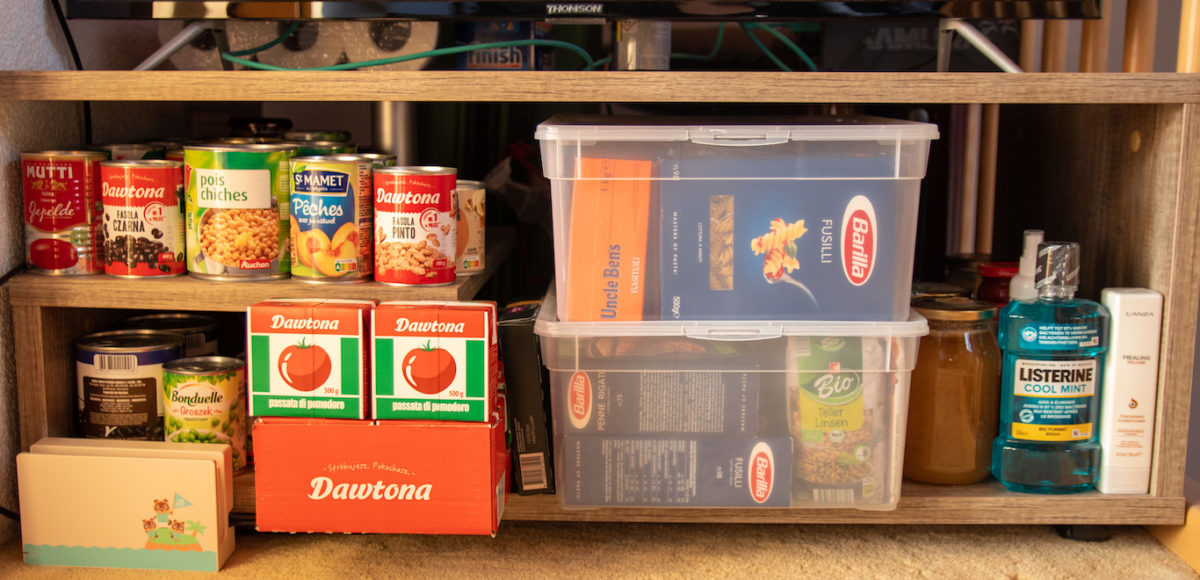By: Jennifer Robbins, CORT Workplace Regional Sales Manager
As the Hurricane season released its ninth storm on the US and fires rage on the west coast, it’s hard not to recognize 2020 as a uniquely treacherous year. Not only does it seem there is an increase in frequency and intensity, but there is an addition of a new hidden danger with the advent of COVID-19. With so much at risk, individuals and businesses living in these areas must consider disaster preparedness and contingency planning.
Living on the gulf coast and working for an essential business during hurricane season for the past 20 years has deepened my knowledge and expertise on this topic. Both personally and professionally, I’ve experienced first-hand the overwhelming power these events have on individual lives. Therefore, as a business professional, I understand the importance of planning and preparation in order to mitigate these events’ potential long-term impacts.
To prepare, you must first reverse engineer the problem and build your contingency plan based on the many risks and priorities they impose. To ready yourself and your organization, my advice is to make your plans around three categories: pre-event, during the event, and post-event.
Pre-event: Preparation to Preserve Life and Property
In today’s climate, with the added financial stresses and complexities of COVID-19, building a comprehensive plan can be challenging. Because natural disasters are impossible to predict, business owners prepared with concrete, well-rehearsed contingency plans will fare better in the long-term.
Start by envisioning the magnitude of different scenarios that can threaten your organization during a disaster. Identify markers for when an event unfolds to trigger actionable steps. An example of this would be a tropical storm or hurricane identified near the coast. How many days will it take to hit land? How could this event potentially impact your employees, your customers, and your business? Basics like utilities, insurance policies, internal phone trees, answering services, and communication methods during an event are essential. Other things to consider are the necessary items needed to run your business, such as equipment, hardware, and redundancies. From there, the who, where, how, and when will begin.
To elicit action individuals are required to understand their roles and responsibilities to ensure the business’s important elements are secured. Once this is done, you should consider the final, most important factor of your business – your people.
Organizations should equally consider their employee risks since there is no one to run the business without them. Recently, I heard a coworker quote Jill Dalton, managing director of Aon’s Property Risk Consulting Group, who said “One of the biggest challenges with hurricanes during a pandemic could be more around human capital than property damage.” With this consideration, people’s plans and safety are equally essential to preserve the viability of your organization.
At the beginning of each season, consider dusting off your plans and reviewing them with your leadership team—Walk through the different preparation elements and responses. From there, managers, supervisors, and other accountable parties should be tested on their knowledge and understanding of their responsibilities. This is a great time to incorporate new information learned in previous months.
During the event: Maintaining and Supporting Communication
Once an event is in play, predetermined processes should take way. Essential personnel will maintain contact with their teams, ensuring everyone is counted. This includes understanding their individual situations and current threats. At this point, established communication systems during a disaster will be important. Does each employee have a cell phone with backup batteries and contingency plans for evacuation? Have they secured important documents and other necessities? Local governments provide checklists and contact numbers for disaster assistance, it’s helpful to share this information in staff meetings.
Since disasters can strike without warning, there should be multiple players within the organization identified to trace employee welfare. Once the storm has passed, an all hands-on deck and situational roll call should be taken to establish the next steps to get things back to normal as quickly as possible.
Post-Event: Support Return-to-Work and Living Activities
Bringing employees back, ready to engage with customers is crucial to the continuity of your business. However, what happens when your business or homes are impacted by the disaster? This part of your plan will require forethought. What cost containment measures have you established to mitigate risks while you begin to rebuild? How can you reduce your customer service impact, ensure cash-flow, and operate at an optimal level while rebuilding? To do this involves pre-established relationships with vendors and resources important to your business. Having an easy-to-access list of essential businesses that can help your operation get up and running quickly can be an indispensable resource.
In my own experience, I recall the impact of mass migration during Hurricane Katrina. Families fled an unprecedented natural disaster caused by broken levees that flooded the New Orleans area. Afterward, some of those residents permanently relocated their homes and businesses. CORT, an essential business served many of those who evacuated this disaster in cities across the gulf coast. Our furniture as a service model offered temporary and longer-term solutions for individual homes and offices.
With access to hundreds of products and services, they provided flexible solutions allowing customers to conserve capital while they re-invested in their businesses.
As disaster will continue to be a part of our own past, present, and future, CORT employees who live within these areas and, are sometimes personally affected, will continue to serve clients who are working to recover from their own losses.
Natural disasters are major disruptions to an economy leading to less than desirable outcomes. Planning is crucial for a quick recovery. By envisioning all the risks, you can then picture an alternative conclusion that benefits both the company and your employees. Because the US continues to experience these catastrophic events, there is a growing need for quality contingency planning.
CORT works closely with disaster relief agencies, insurance companies, and individuals to make the process of furnishing your home and business – whether temporary or permanent – as smooth as possible after a disaster. It is vital to highlight the years of experience CORT has servicing communities during these disruptions. With this, should the need ever arise, we are here to serve you and your business.
In short, let us know how we can help.
Jennifer Robbins is a Regional Sales Manager on the workplace team at CORT Furniture Rental. She specializes in helping businesses facilitate change in the workplace. Connect with Jennifer on LinkedIn and learn more about how CORT can help you.



